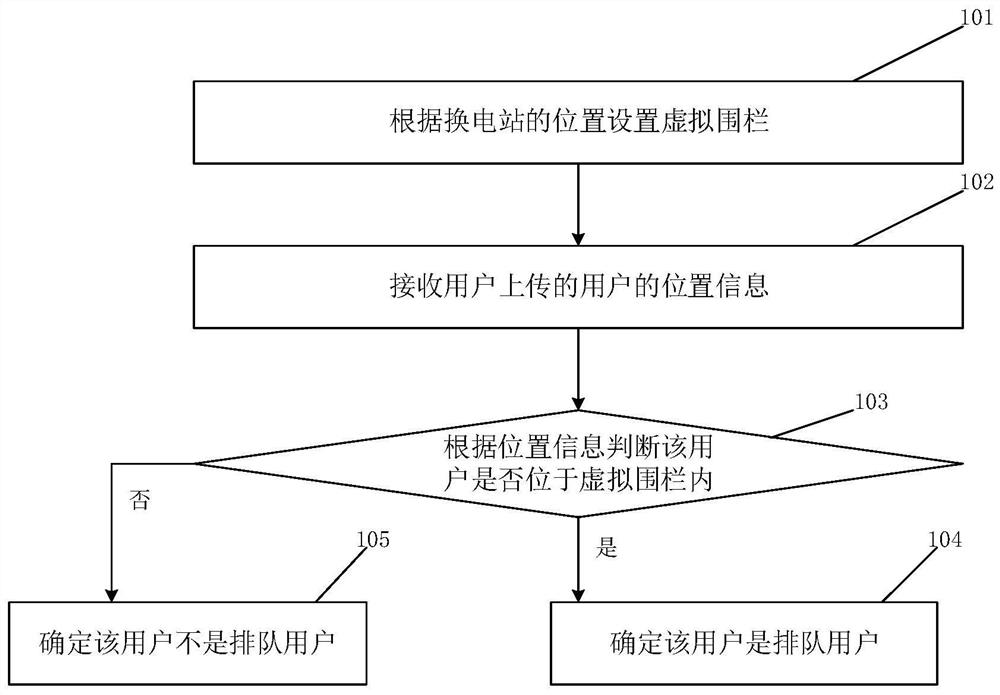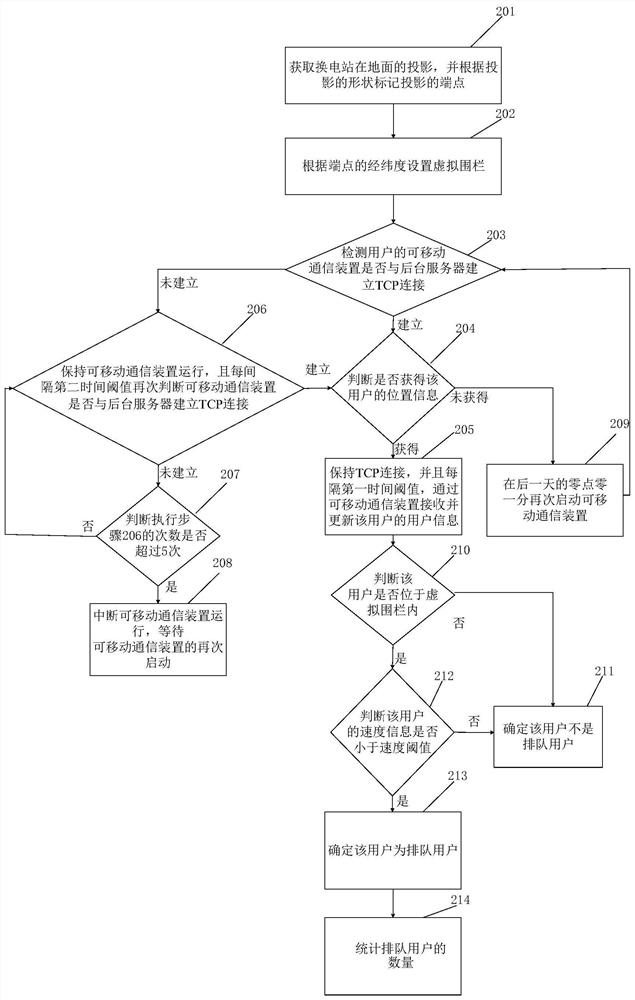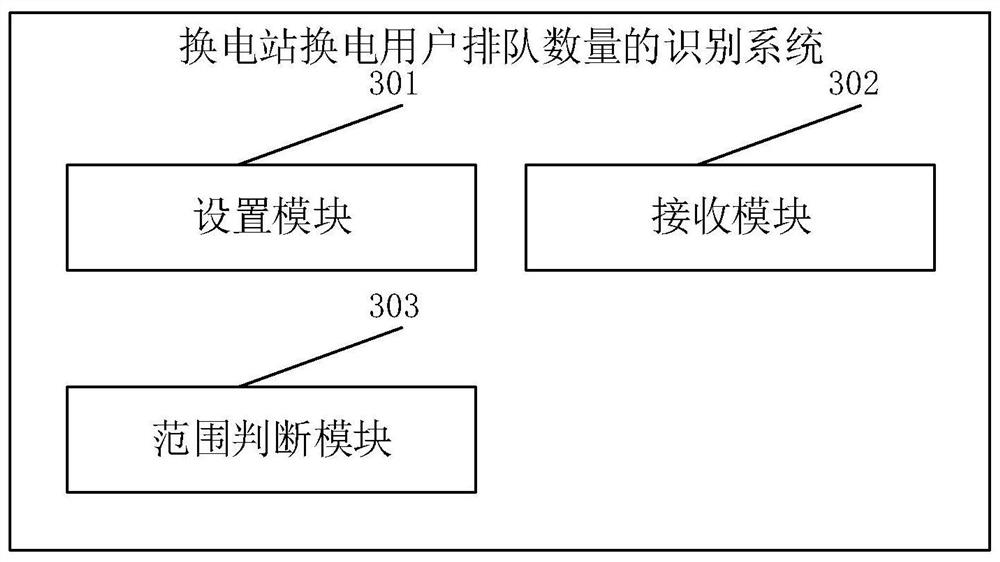Method and system for identifying queuing number of battery replacing users of battery replacing station
An identification method and identification system technology, which is applied in the identification method and system field of the number of users queuing for battery exchange at the exchange station, can solve problems such as inefficiency and error-proneness, and achieve the effects of saving labor, accurate range, and improving statistical efficiency
- Summary
- Abstract
- Description
- Claims
- Application Information
AI Technical Summary
Problems solved by technology
Method used
Image
Examples
Embodiment 1
[0081] This embodiment provides a method for identifying the number of queuing users for battery swapping at a swap station, such as figure 1 As shown, identification methods include:
[0082] Step 101, setting up a virtual fence according to the position of the power station;
[0083] Step 102, receiving the user's location information uploaded by the user;
[0084] Step 103, judge whether the user is located in the virtual fence according to the location information, if so, then perform step 104, if not, then perform step 105;
[0085] Step 104, determine that the user is a queuing user.
[0086] Step 105, determine that the user is not a queuing user.
[0087] Wherein, the range of the virtual fence covers the range of the power station.
[0088] Wherein, the power exchange station includes a dual-channel or three-channel power exchange station, and the power exchange station includes at least one power exchange position.
[0089] In this embodiment, by setting up a vi...
Embodiment 2
[0091] This embodiment provides another method for identifying the number of users queuing up for battery swapping at the swap station, such as figure 2 As shown, identification methods include:
[0092] Step 201. Obtain the projection of the swap station on the ground, and mark the endpoint of the projection according to the shape of the projection;
[0093] Step 202, setting a virtual fence according to the latitude and longitude of the endpoint;
[0094] Step 203, detecting whether the mobile communication device of the user establishes a TCP connection with the background server, if established, then execute step 204, if not established, then execute step 206;
[0095] Step 204, judging whether to obtain the user's location information, if obtained, then perform step 205, if not, then perform step 209;
[0096] Step 205, maintain the TCP connection, and receive and update the user information of the user through the mobile communication device every first time threshold...
Embodiment 3
[0124] This embodiment is a further improvement to Embodiment 2, and its steps are basically the same as Embodiment 2, the difference is that the user information in this embodiment also includes the first time information when uploading user information, in this embodiment The method also includes acquiring the user's second time information, the second time information being the billing time when the user changes batteries, and after step 210 and before step 213, it further includes: judging the relationship between the first time information of each user and the second time information Whether the difference between the two time information is greater than the fourth time threshold, if so, execute step 213, determine that the user is a queuing user, if not, execute step 211, determine that the user is not a queuing user.
[0125] Among them, the number of users in the virtual fence indicates how many drivers in the current statistics may be changing batteries, which may incl...
PUM
 Login to View More
Login to View More Abstract
Description
Claims
Application Information
 Login to View More
Login to View More - R&D
- Intellectual Property
- Life Sciences
- Materials
- Tech Scout
- Unparalleled Data Quality
- Higher Quality Content
- 60% Fewer Hallucinations
Browse by: Latest US Patents, China's latest patents, Technical Efficacy Thesaurus, Application Domain, Technology Topic, Popular Technical Reports.
© 2025 PatSnap. All rights reserved.Legal|Privacy policy|Modern Slavery Act Transparency Statement|Sitemap|About US| Contact US: help@patsnap.com



